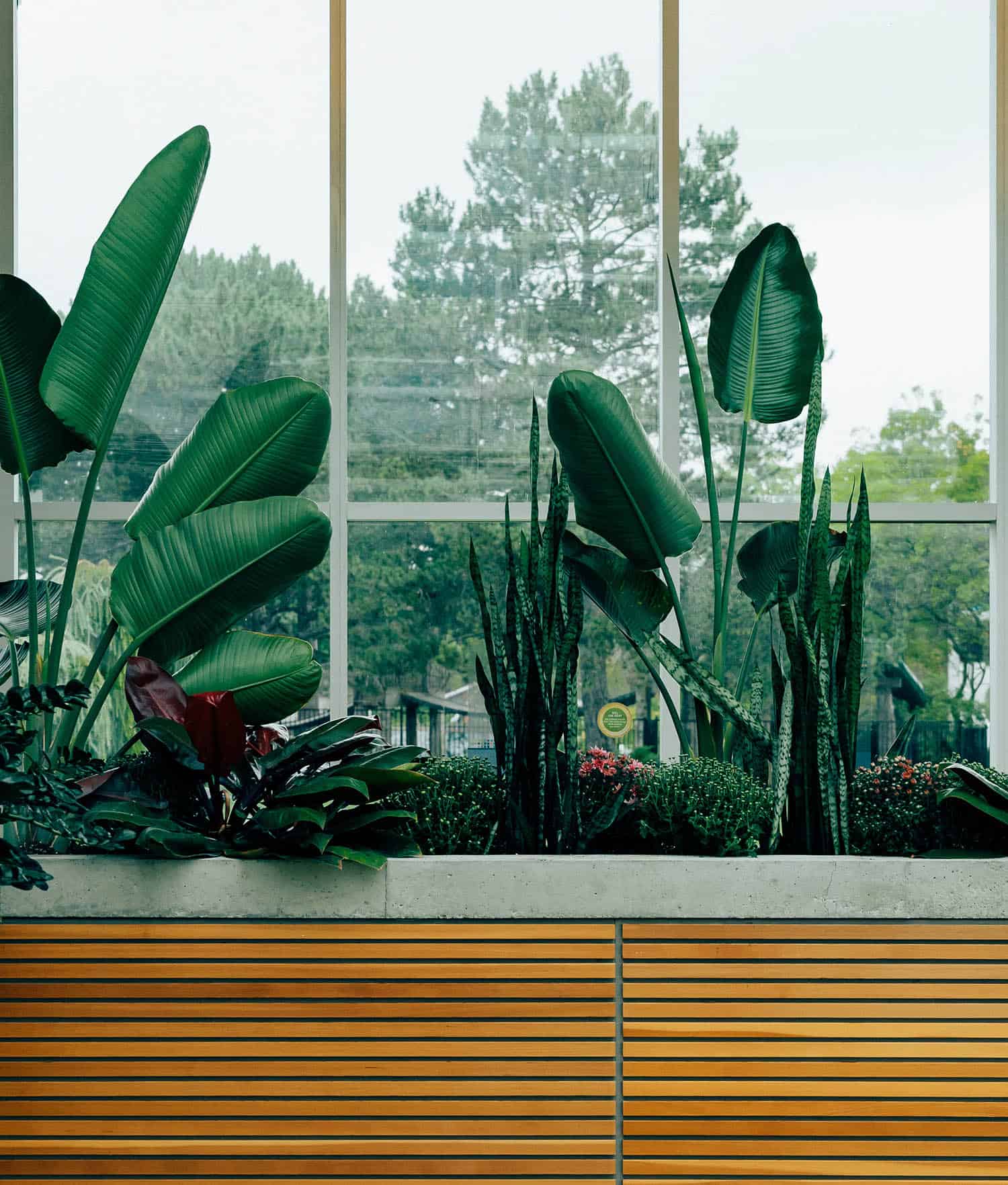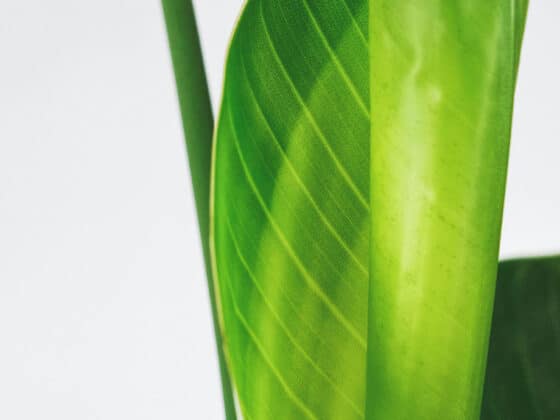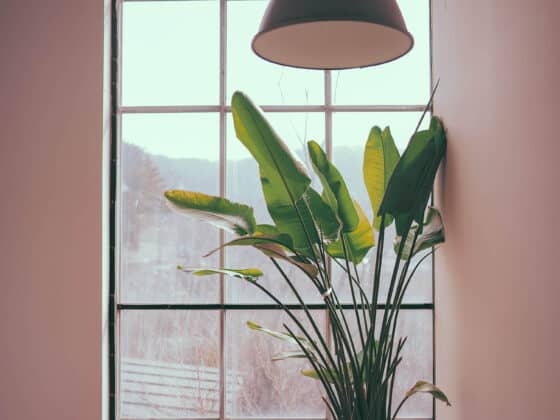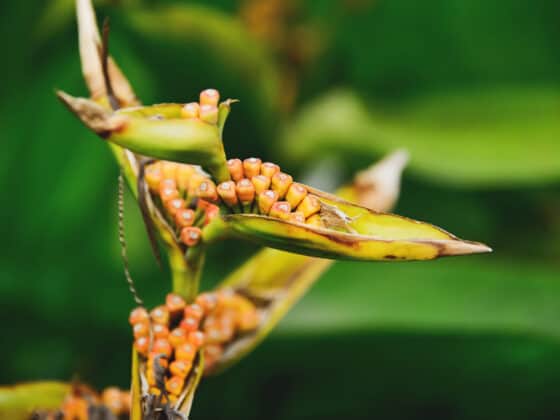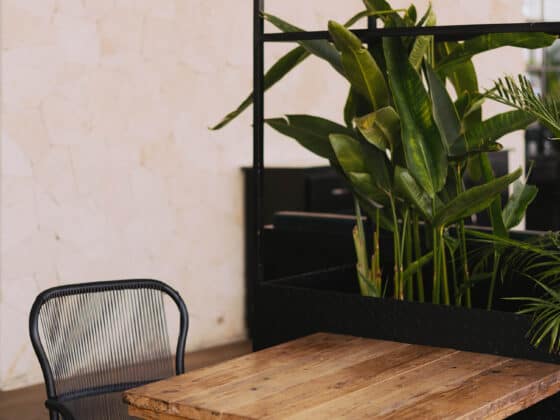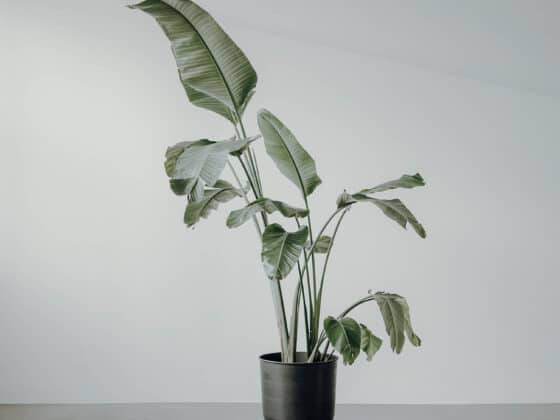The Bird of Paradise, scientifically known as a Strelitzia, is a well-known houseplant loved for its beautiful flowers and broad leaves. Despite being very popular with houseplant collectors, few people know how to categorize the Bird of Paradise. So, what exactly is a Bird of Paradise?
The Bird of Paradise is not a Palm or Banana Tree. “Bird of Paradise” is the name given to five species of flowering plants in the genus Strelitzia, which belongs to the family Strelitziaceae. Despite sharing many qualities with Palms, Banana Trees, and Heliconias, the Bird of Paradise is an entirely different plant from a different region.
Keep reading to learn more about how to tell these plants apart and what exactly makes them so different. This article will also cover the scientific classifications of the Bird of Paradise, how to identify them, and how to tell if your plant is not a Strelitzia.
Bird of Paradise Scientific Classification
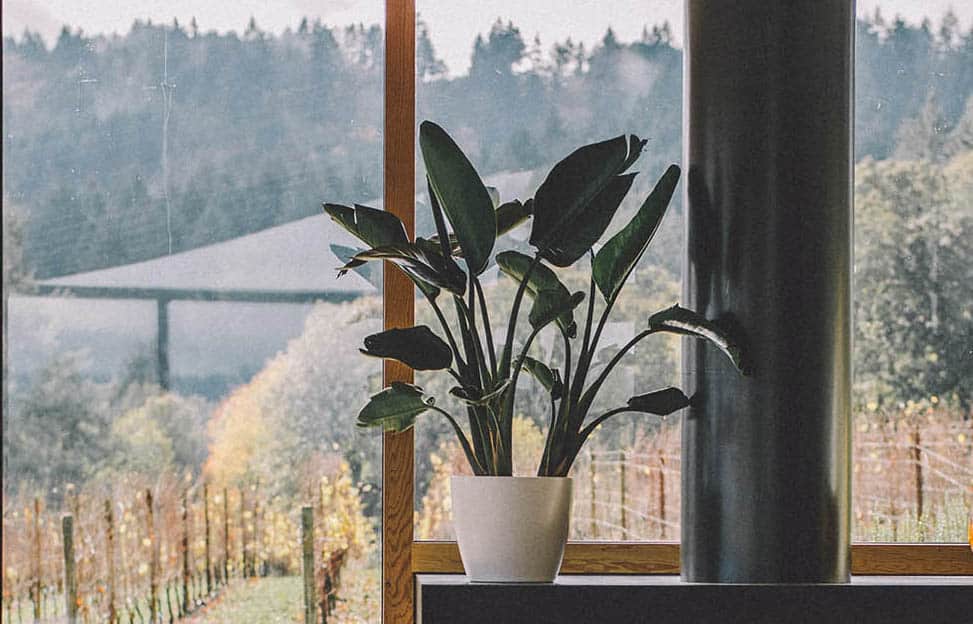
The scientific classification of the Bird of Paradise is simple. “Bird of Paradise” actually refers to five different species of plants in the genus Strelitzia. This genus belongs to the family Strelitziaceae.
While this sounds confusing, it’s pretty straightforward. All plants are broken up into smaller and more specific categories until they are given a species name. Most genera (the plural for genus) include several different species of plant.
The five species of the genus Strelitzia all share a common appearance. Their flowers look like the bird they are named after and can be orange, red, or white.
Their leaves are very broad. This makes them prone to tearing, so many older plants feature leaves with rips. The leaves of the Bird of Paradise emerge from a cluster of stems that are closely packed together in the soil. Mature leaves are glossy and robust.
The most common species of Strelitzia are the Strelitzia reginae and Strelitzia nicolai. Despite being large plants, these varieties respond well to the indoors and produce vibrant flowers with the proper care. There are three other accepted species of Strelitzia.
Other Plants Similar to Bird of Paradise
Several plants share some common features with Strelitzias, leading them to be mislabeled. This is often a problem with tropical plants because of the special traits that have allowed the plants to survive.
The broad, stiff leaves associated with the Bird of Paradise cause it to be confused with Banana Trees and Palms. Another plant, the Heliconia, is called the False Bird of Paradise due to its resemblance to Strelitzias.
The Differences Between Bird of Paradise and Banana Trees
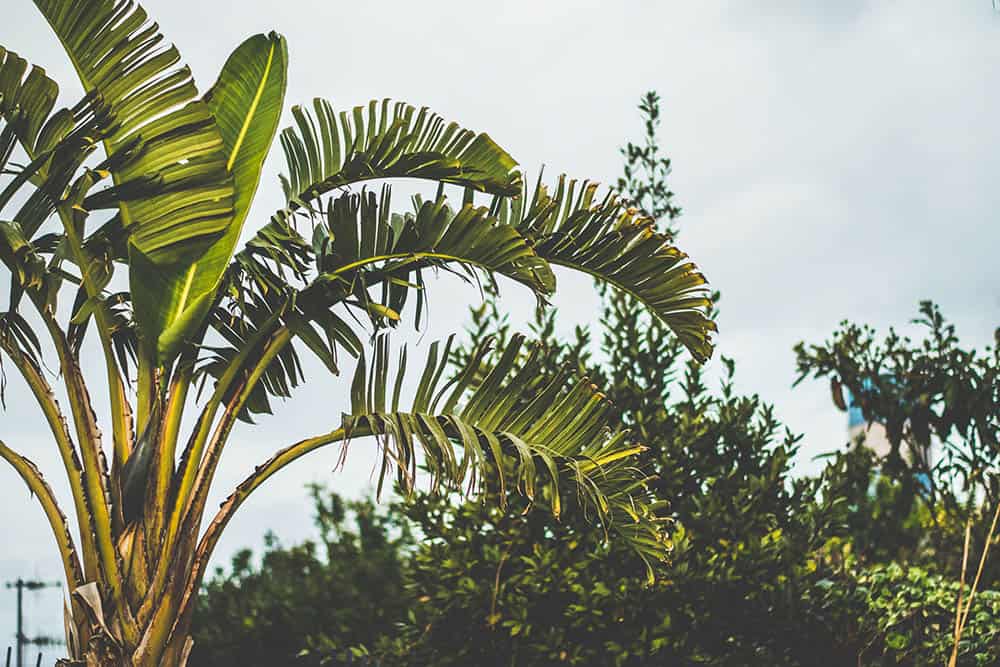
Banana plants and Bird of Paradises are easily confused. Both have enormous, paddle-like leaves, and each can reach heights up to 30 feet. The similarities end here, though. The Bird of Paradise is not a Banana Tree.
Banana Plants belong to the family Musaceae, a close relative of the family Strelitziaceae. Strelitziaceae is the family that encompasses all five species of Strelitzia. Early research often listed the members of the Strelitzia genus as belonging to Musaceae because of how closely they resemble one another.
To summarize the connection between the two, Strelitzias and Banana Plants could be considered distant cousins. While certain traits are definitely shown, such as the leaves, there are many important differences.
Musaceae is very diverse, featuring a wide range of plants across a large swathe of climates. The family Strelitziaceae is confined to South Africa and includes only a handful of species.
The physical differences between Banana Plants and Birds of Paradise are easy to spot when looking at the plant’s body. Banana Plants form what’s called a “pseudostem,” which make them resemble trees. The stem of the Strelitzia begins differently, erupting from the ground in a cluster of shoots.
Both plants produce fruit. However, the fruit of the Bird of Paradise is not edible. Banana Plants are, of course, grown for food and their berries look very different from the seeds of the Strelitzia.
The Differences Between Bird of Paradise and Palms
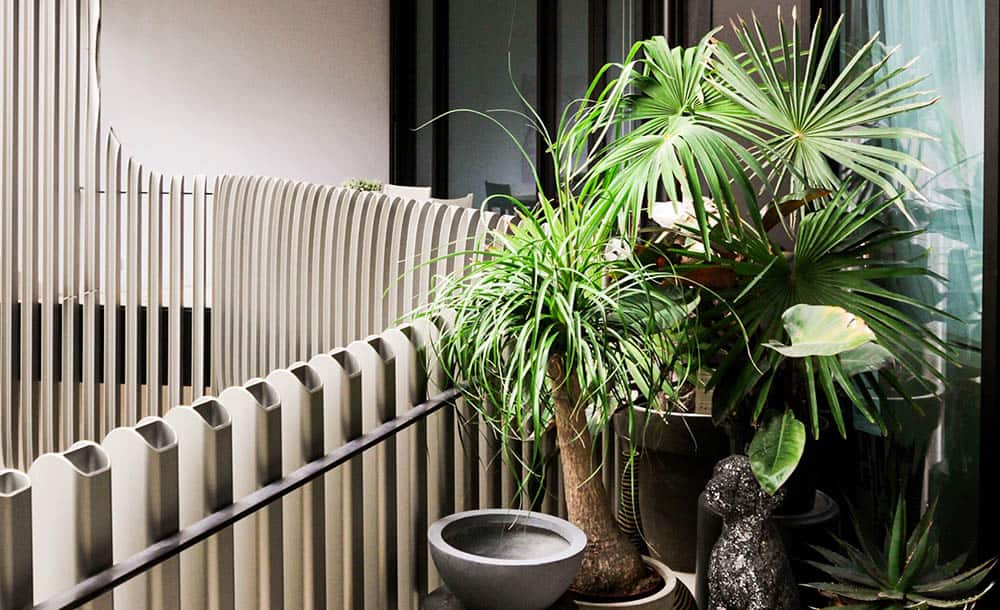
In addition to being confused with Banana Plants, Strelitzias are often miscategorized as Palms. Strelitzias and Palms look similar, but the two are not closely related. They belong to entirely different families.
Palms belong to the family Arecaceae, one of the most genetically diverse families on Earth. The members of this family range from climbers to shrubs and can be found across subtropical and tropical areas of the world. Despite there being many types of Palms, most share the classic fronds and tree-like stems. Fronds are large leaves that are divided and resemble a fan.
Strelitzias, in contrast, belong to the family Strelitziaceae and are confined to South Africa. While the two sometimes look similar due to leaf tears that Bird of Paradises develop, Bird of Paradise does not have fronds.
Palm trees and Strelitzias both produce flowers. However, the flowers that come from Palm Trees are often unremarkable and easy to miss. Strelitzias have breathtaking displays of foliage, the trait most loved by plant enthusiasts.
The Differences Between Bird of Paradise and Heliconia
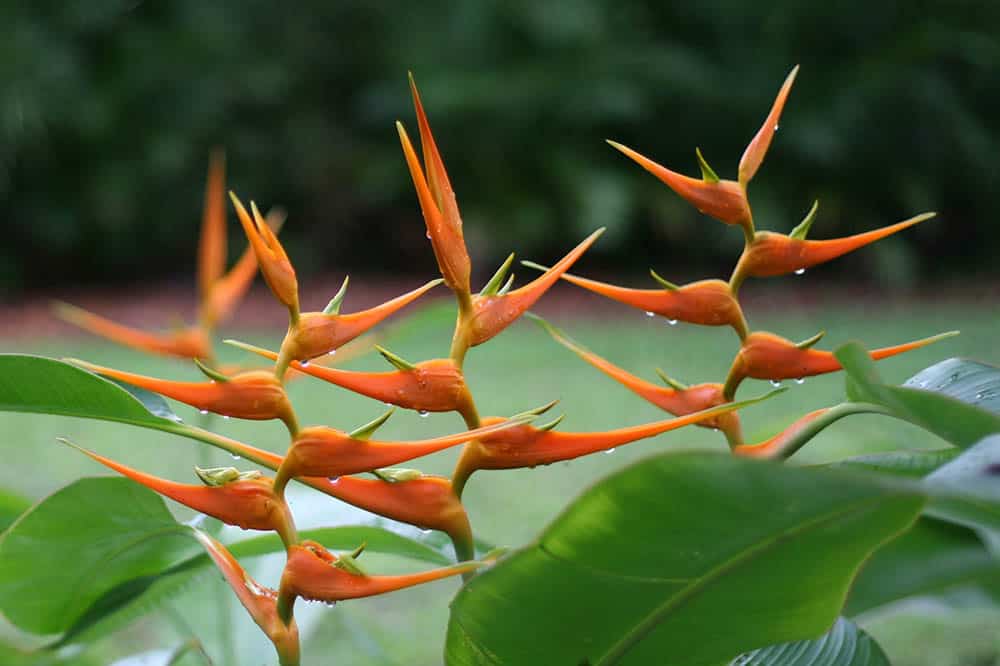
Another close relative of the Bird of Paradise, the Heliconia, resembles the Strelitzia so much that it earned the nickname “False Bird of Paradise.”
Heliconias belong to Heliconiaceae, a family of plants characterized by their impressive flowers. These plants belong primarily to the tropics of the Americas, with a few scattered samples of species popping up on isolated islands. In contrast, Strelitzias are found only in South Africa, where they receive the perfect blend of humidity and sunlight.
The flowers of the False Bird of Paradise are what most easily sets it apart from a real Bird of Paradise. The Strelitzia strongly resembles the bird it is named after. Heliconias vary in how their flowers look, with some being stacked oddly and others looking like immature Bird of Paradise flowers.
The stems of the two are very similar in appearance, making them difficult to recognize without the help of the flowers. The leaves tend to be more pointed at the ends. Additionally, the central veins of some varieties of Heliconia are red and purple.
What Plant Do You Have?
If you aren’t sure what type of plant you have, looking at the leaves and stem can often tell you whether your plant is actually a Bird of Paradise.
The leaves of the Bird of Paradise can reach up to 18 inches long. They are oblong but come to a subtle taper – they look like canoe paddles. The leaf’s central vein is pronounced, and the leaves tend to tear when exposed to wind.
The stem of the Bird of Paradise is actually a clump of stems instead of a singular, tree-like stem. Most Palms and Banana Trees produce stems that strongly resemble trees because of the density of the foliage.
A Bird of Paradise can best be identified when it’s flowering. The Strelitzia’s flowers are very distinct and strongly resemble the bird that it is named after. The flowers range in color from white to red, depending on the species, and can be large. It takes several years for a Strelitzia to flower, so this isn’t the easiest way to identify young plants.
If your plant has fronds or if it has flowered but doesn’t look like what you’ve seen online, it isn’t a Bird of Paradise. Some resellers mislabel their plants because of misunderstandings about species nicknames. This is a common problem with Strelitzias.
To avoid this, be wary about any plants you’ve purchased from an unknown source. Reputable nurseries should provide the scientific name in addition to the plant’s regional nickname. If you aren’t sure about a plant, asking may help clear up any questions you have.






